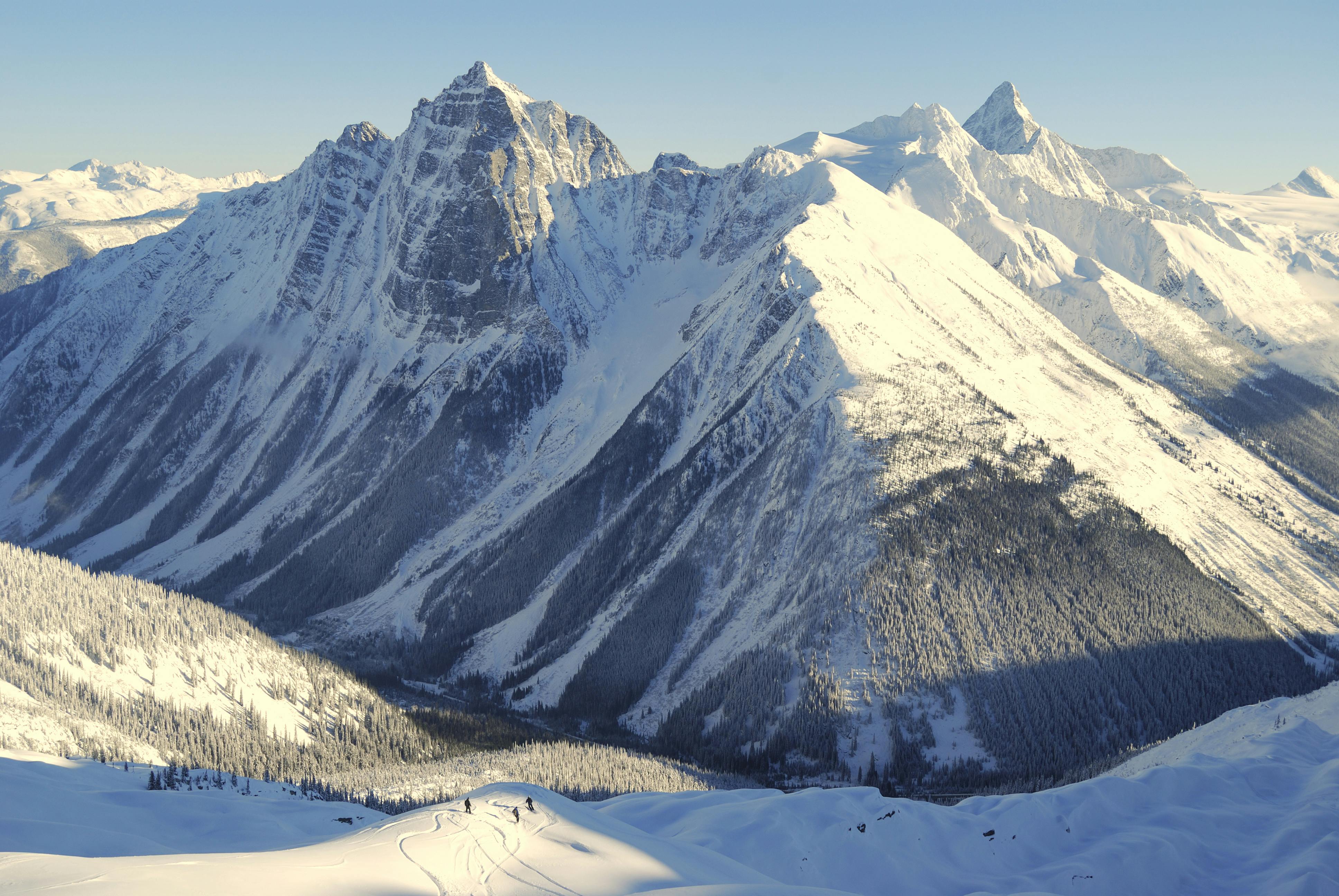
- Credit
- Silas Patterson
Aspect refers to the direction a slope faces. It is an important terrain attribute as it relates directly to both sun and wind exposure, as well as to snow metamorphism. The presence of sun crusts, surface hoar, near-surface faceted snow, solar warming, and wind effect can all be highly dependant on aspect.
Sunny, or solar, aspects:
- Are more likely to see temperature and sun crust formation than shaded aspects;
- Often hold a shallower snowpack than shaded aspects;
- Can experience rapid warming during periods of strong sunshine;
Shaded aspects:
- Generally face north and east.
- Often hold and preserve persistent weak layers for longer than solar aspects.
- Are more likely to see surface hoar or faceted snow form.
The solar effect on slopes is dependent on aspect. Early in winter, the sun mostly impacts south and west facing slopes. As the winter progresses and days lengthen, eastern aspects will also see sun affects in the morning, while the effect on west-facing slopes is enhanced in the afternoon.
Avalanche forecasts specify which aspects are affected by each avalanche problem. This helps forecast readers manage their exposure to avalanche hazard in the backcountry.
There are several ways to determine what aspect you’re on:
- Compare your position to the sun’s position in the sky;
- Use a compass;
- Check your position on a GPS device or smart phone app.